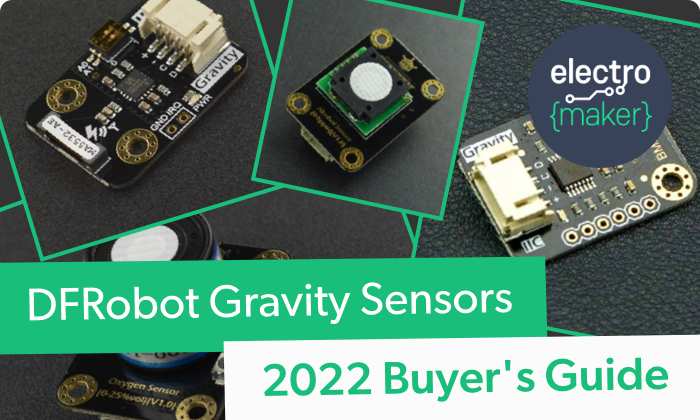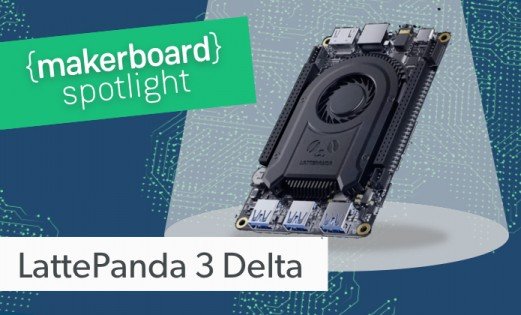DFRobot Gravity Sensors Buying Guide: 2022
Edge computing has proved to be a highly promising solution for building enterprise-scale complex applications. To serve the demand of the enterprise adoption scale, edge devices have been on the rise, and so are the interfacing sensors. Over the past couple of years, electronic device manufacturers across the globe have started designing modular, plug and plug toolkits and interfacing sensors for faster prototyping. Seeed Studio Grove modules, Adafruit STEMMA QT sensors, and SparkFun Qwiic sensors have already set precedence for adding more solutions in the embedded device ecosystem. DFRobot Gravity series is a similar open-source, modular, plug-and-play modules, designed for powerful carrier boards, expansion kits, microcontrollers, and single-board computers.

DFRobot Gravity Series is claimed to be the "world’s first" in using color-coded pin headers representing the pin properties. Currently, over 250 gravity modules, the expansion shields, functional modules, and sensors allow users of any skill level to leverage the standard interface to realize ideas and projects. Cross compatibility has been a key to success for such interfacing modules, and the DFRobot Gravity series is following that trend and is fully compatible with micro:bit and Arduino boards.
Gravity BME680 Environmental Sensor

An environmental sensor is a small, eco-friendly device that enables hobbyists, makers, and developers to monitor weather, water, irradiation, and soil moisture levels for improving farm field management and preventing crop and plant disease. DFRobot BME680 environmental sensor is a low-power gas, pressure, temperature, and humidity sensor, all integrated in a single package, based on the famous BOSCH BME680 sensor. The Bosch sensor is designed for mobile applications and wearable devices that demand for low-power consumption and space-constrained deployment. Depending on the operation conditions, the BOSCH BME680 has optimized power consumption enabling long-term stability with high EMC robustness.
The sensor is designed in such a way that the user can monitor four environmental parameters simultaneously without the need for the additional module. Shipped with a Gravity I2C connector, this plug-and-play device is easy to connect and get started. The onboard voltage regular IC and level translator IC, the environmental sensor has good compatibility with the host controller.
Specifications of Gravity Environmental Sensor
- Sensor: BOSCH BME680 environmental sensor
- Response time:
- Gas sensor: < 1s
- Humidity sensor: 8s
- Input voltage: 3V3 to 5V
- Operating current: 5mA
- Interface: Gravity I2C connector
- Operating temperature: -40℃~+85℃
- Dimension: 30x22 mm
Gravity Lightning Sensor

A device that can detect lightning produced by thunderstorms comes in three categories– ground-based systems using multiple antennas; mobile systems using a direction and a sense antenna in the same location; and space-based systems. Gravity Lightning sensor integrates AMS AS3935 Franklin lightning sensor IC and Coilcraft MA5532-AE dedicated antenna to detect lightning distance, intensity, and frequency within a radius of 40kms both indoor and outdoor. The AS3935 Franklin lightning sensor IC is a programmable device that detects the presence and approach of lightning activity in the vicinity. The IC also detects both cloud-to-ground and intra-cloud flashes and the programmability enables threshold setting for optimal controls.
Designed to be embedded in smart wearable devices for outdoor climbers and people that work at heights, the Gravity Lightning sensor integrates a man-made disturber rejection algorithm to avoid the electrical interference generated by household appliances. The sensor can also be used in indoor protection devices inside lightning-sensitive equipment that automatically triggers these devices to switch to the backup power to isolate the power grid when lightning strikes.
Specifications of Gravity Lightning Sensor
- Sensor/ICs: AMS AS3935 Franklin lightning sensor IC
- Antenna: Coilcraft MA5532-AE dedicated antenna
- Detection range: 40 km
- Distance detection resolution: 1-4 km
- Intensity detection resolution: 21 bits
- Interface: Gravity I2C connector
- Input voltage: 3V3 to 5V
- Dimensions: 30x22 mm
- Weight: 10 grams
Gravity Oxygen Sensor

The oxygen sensor also referred to as an O2 sensor, monitors how much-unburned oxygen is present in the environment. The Gravity Oxygen sensor can measure the ambient O2 concentration accurately with high anti-inference ability, high stability, and high sensitivity. The sensor is Arduino compatible with the potential to be used in a wide range of applications such as air quality monitoring, IoT, etc. The hardware is also compatible with other edge devices such as Arduino Uno, ESP32, Raspberry Pi, and more.
Specifications of Gravity Oxygen Sensor
- Operating voltage: 3V3 to 5V
- Interface: Gravity I2C connector
- Measurement range: 0~25%Vol
- Maximum measurement limit: 30%Vol
- Resolution: 0.15%Vol
- Sensitivity: 0.10±0.05 mA in the air
- Response time: <= 15 seconds
- Operating temperature: -20℃ ~ 50℃
- Lifetime: > 2 years in the air
- Dimensions: 37x27x24.5 mm
- Weight: 0.037 kg
Gravity Alcohol Sensor

An alcohol sensor module is designed for detecting alcohol. It requires high sensitivity and fast response time. The Gravity Alcohol sensor has a 0 to 5ppm measuring range is aimed for fast and accurate detection of alcohol gas concentration in the air. The miniaturized design of the alcohol sensor module is suitable for deploying in breathalyzers, smart vehicles, and remote IoT applications. The hardware is characterized by anti-interference, high stability, and sensitivity for up to 2 years of service life.
Specifications of Gravity Alcohol Sensor
- Operating voltage: 3V3 to 5V5 DC
- Power: 0.05W (5V)
- Interface: I2C and UART
- Measuring range: 0 to 5 ppm
- Resolution: <= 0.01 ppm
- Response time: <= 60 seconds
- Operating temperature: -20℃ ~ 50℃
- Lifetime: 2 years in the air
- Dimensions: 27x37 mm
Final Thoughts
There are many more Gravity modules (250 in total!) that we will be looking into in depth in the subsequent articles. This article focuses on the modular, plug-and-play interfacing modules designed for remote applications. The list of sensors mentioned above gives a gist of the variety of sensor modules available under the hood of DFRobot Gravity series.
Take a look at the full list of DFRobot Gravity Modules available in the Electromaker store here!
Your turn: Have you got any experience with DFRobot Gravity Sensors? Let us know which one is your favourite in the comments section below!














































Leave your feedback...